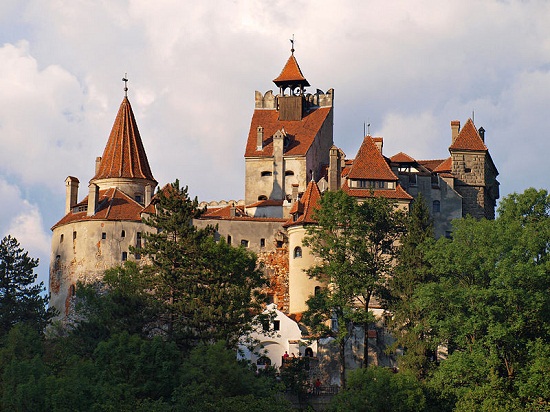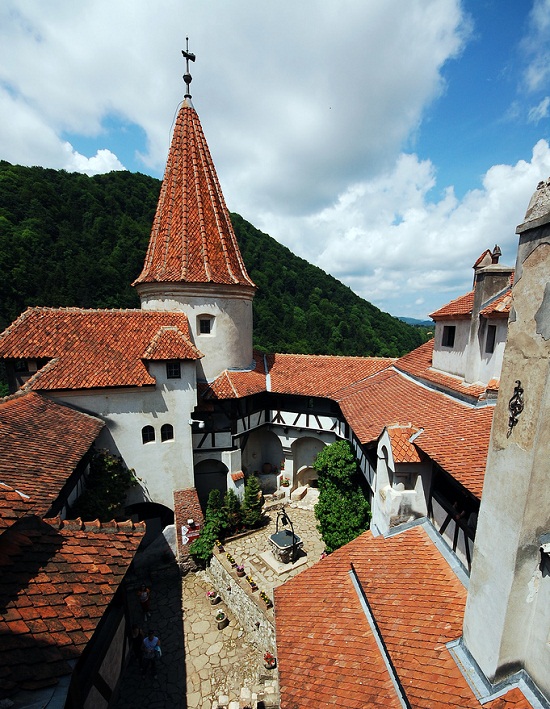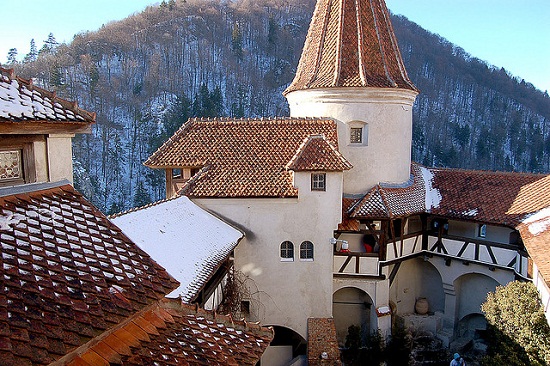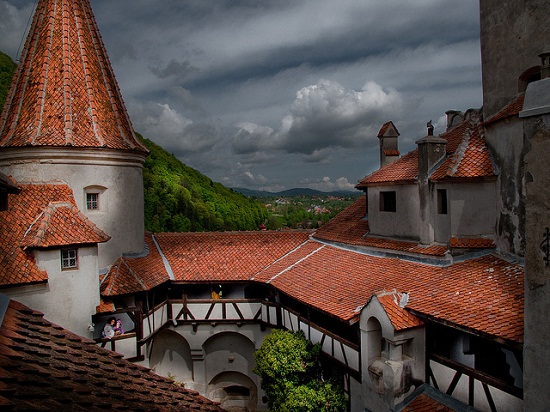Bran Castle in Romania represents a fantastic destination for vampire lovers from all around the world, writes the British Daily Mail, when giving details about the history of the fortress situated in Brasov County, describing it as a mysterious and beautiful edifice.

Bran Castle, which is positioned on top of a hill near Brasov, in central Romania, was closely linked to Count Dracula. Built at the beginning of the fourteenth century, the castle is open to the public, and visitors have the possibility to investigate squeaky rooms and dark passages, says an article published on dailymail.co.uk.
According to the British publication, tourists with a keen view will discover however that Dracula never existed.
The famous vampire was created by Irish novelist Bram Stoker in his iconic novel “Dracula”, published in 1897. On the other hand, Stoker never visited Romania. Dracula is a Transylvanian Count, the master of a castle high on top of a high rock, from which he guards the river valley winding through the Principality of Transylvania. Bran Castle is the only edifice in Transylvania which corresponds to the description of Bram Stoker, and that’s why the world refers to it as Dracula’s Castle, writes Daily Mail.

Known as Vlad the Impaler, this stern aristocrat ruled Wallachia, which is now part of Romania, in the fifteenth century, probably between 1456 and 1462, a period when the region was under Ottoman rule. Also, the publication says that Vlad, a member of the house Draculesti, has earned a gloomy reputation as a result of frequent executions by impaling.
Some historians say that Vlad III was captured by the Hungarian king Matthias Corvinus in 1462, and he was transferred to the fortress, where he spent two months in a subterranean prison. This is also one of the reasons why the current owners of Bran Castle are calling the castle the house of Dracula, says the Daily Mail.
Also, historians argue that the property shows a notable resemblance to the terrifying castle on the hill, so excitingly described in Stoker’s novel. Although Stoker did not travel to Romania neither before or after he wrote his masterpiece about Dracula, the owners say that the imaginary description of the Castle Dracula, as it appears in the engraving printed in the first edition of the novel, is strikingly similar to the Bran Castle – notes the Daily Mail.
Bran Castle attracts each year about half a million tourists. Those who will visit the fortress will discover a beautiful building, whether it has anything to do with vampires or not, says the Daily Mail.
The British newspaper also says that many of the castle’s rooms are decorated with furniture and lighting purchased by Queen Mary, an art lover and collector, who was the last Queen consort of Romania in the early twentieth century.

Bran Castle, whose first documentary attestation dates from November 1377, is one of the most important tourist attractions in Romania. It attracts mostly foreign tourists because it is associated with the name of Dracula, whose fame comes from the novel “Dracula” by Bram Stoker.
In 1920, Brasov City Council donated the castle to Queen Marie of Romania, as a token of gratitude for her contribution to the Greater Union in 1918. The Queen furnished the castle and and bequeathed to her daughter, Princess Ileana, the sister of King Charles II of Romania. After the expulsion of the royal family in 1948, Bran Castle became the property of the Romanian state, and it was abandoned and became ruinous. The Castle reopened in 1956, and it was partly turned into a museum of history and feudal art. In 1987, the castle came into restoration work, which was largely completed in 1993.

Bran Castle was returned in May 2006 to its rightful owner, Dominic von Habsburg. Bran Castle officially passed into the property of Dominic of Habsburg in 2009 after the representatives of the Bran Museum and those of the House of Habsburg signed the minutes of handover of the tourist attraction.
